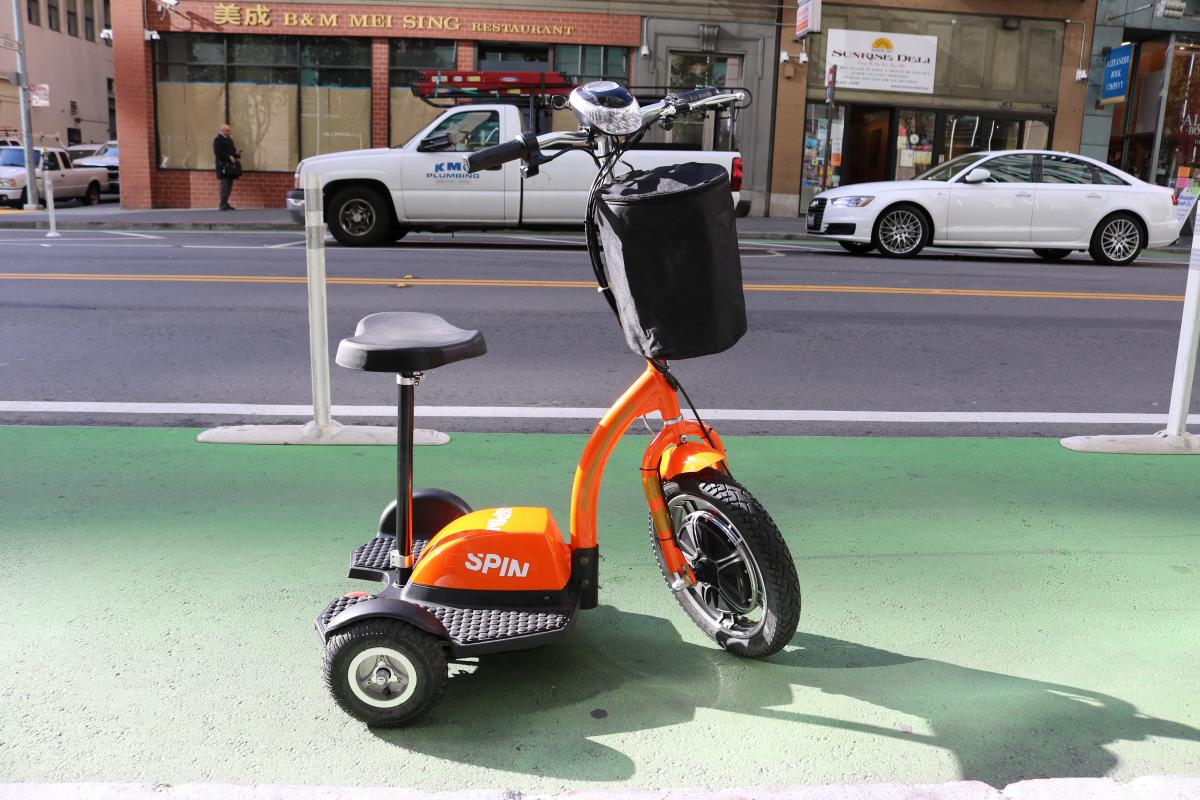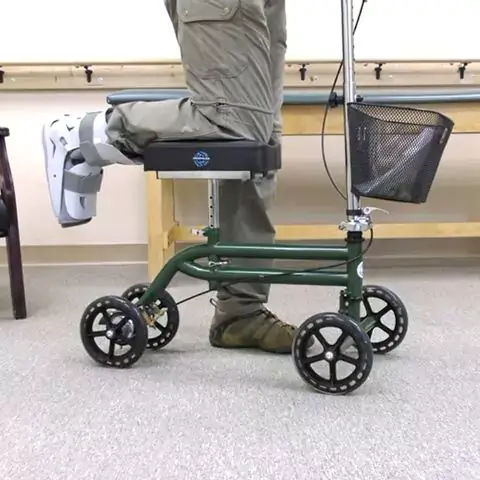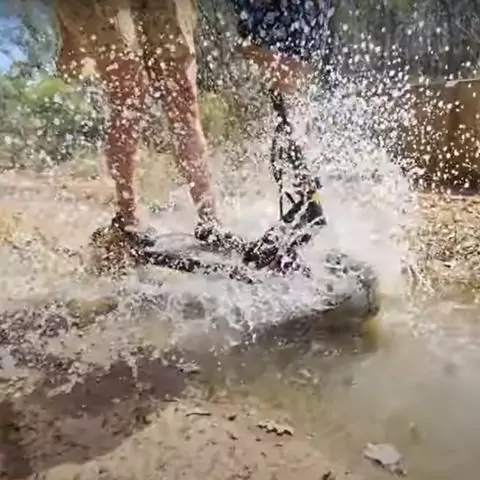If your electric scooter’s back wheel is not spinning, there could be a problem with the motor or the wiring connected to it. It’s important to check for any loose connections or damaged wires first, and if necessary, seek professional assistance for a thorough inspection and repair.
Neglecting this issue can cause further damage to your scooter and compromise your safety on the road. Keep reading to learn more about common causes and solutions for this problem. As electric scooters become increasingly popular for commuting and recreational purposes, encountering technical issues can be frustrating.
One common problem faced by riders is when the back wheel of their electric scooter refuses to spin. This issue not only affects the scooter’s performance but also makes it difficult to ride and poses safety concerns. To resolve this problem, it is essential to identify the root cause and take appropriate actions accordingly. We will discuss the potential reasons behind an electric scooter back wheel not spinning and provide solutions to fix this issue effectively. So, let’s dive in and get your electric scooter up and running again in no time.

Credit: www.sfmta.com
Contents
- 1 Common Issues With Electric Scooter Back Wheels
- 2 Fixing Loose Or Damaged Axle
- 3 Fixing Worn-Out Bearings
- 4 Fixing Motor Malfunction
- 5 Additional Tips For Troubleshooting
- 6 Frequently Asked Questions About Electric Scooter Back Wheel Not Spinning
- 6.1 Why Is My Electric Scooter Back Wheel Not Spinning?
- 6.2 How Can I Fix My Electric Scooter’S Back Wheel?
- 6.3 What Should I Do If My Electric Scooter’S Back Wheel Is Seized?
- 6.4 Why Is There A Burning Smell Coming From My Electric Scooter’S Back Wheel?
- 6.5 Can I Ride My Electric Scooter If The Back Wheel Is Not Spinning?
- 7 Final Thoughts
Common Issues With Electric Scooter Back Wheels
If you’re experiencing a problem with your electric scooter’s back wheel not spinning, there could be a few common issues causing this problem. In this section, we will discuss some of the key factors that could be responsible for this malfunction.
Let’s take a closer look:
Loose Or Damaged Axle
- The axle is an integral component that allows the back wheel to spin freely. When the axle becomes loose or damaged, it can interfere with the smooth rotation of the wheel.
- The axle may be loose due to insufficient tightening or wear and tear over time.
- Damaged axles may be bent or broken, preventing proper wheel movement.
Worn-Out Bearings
- The bearings play a crucial role in allowing the back wheel to rotate smoothly. Over time, these bearings can wear out, causing the wheel to stop spinning or become stiff.
- High levels of friction and lack of lubrication can hasten the wear and tear of bearings.
- Debris and dirt accumulation can also lead to worn-out bearings.
Motor Malfunction
- The motor is responsible for driving the back wheel forward. If there is a malfunction in the motor, it can result in the wheel not spinning at all.
- Electrical issues, such as a faulty connection or damaged wiring, can disrupt the motor’s functionality.
- Overheating may also cause the motor to malfunction and affect the spinning of the back wheel.
Remember, if your electric scooter’s back wheel is not spinning, it is essential to identify the root cause of the problem. This section provided an overview of the common issues that may be responsible for this malfunction. By understanding these factors, you can better diagnose and resolve the issue, ensuring your electric scooter is back up and running smoothly.
Fixing Loose Or Damaged Axle
If you’re experiencing an issue with your electric scooter back wheel not spinning, it could be due to a loose or damaged axle. The axle plays a crucial role in keeping the wheel securely in place and allowing it to rotate smoothly.
In this section, we’ll explore the steps to fix a loose axle nut and replacing a damaged axle.
Checking Axle Nut Tightness
To ensure that your electric scooter’s back wheel spins freely, it’s important to check the tightness of the axle nut. Here are the key points to keep in mind:
- Locate the axle nut on the non-chain side of the wheel.
- Using an appropriate-sized wrench or spanner, gently tighten the axle nut.
- Be cautious not to overtighten the nut, as it can put unnecessary pressure on the bearings.
- Test the wheel by spinning it to ensure it rotates smoothly.
- If the wheel still doesn’t spin freely, proceed to the next steps to inspect and potentially replace the axle.
Replacing Damaged Axle
Sometimes, the axle itself can become damaged and impede the wheel from spinning properly. Here’s what you need to know about replacing a damaged axle:
- Remove the wheel from the electric scooter frame by loosening any retaining nuts or bolts.
- Examine the current axle for signs of damage, such as bends, cracks, or excessive wear.
- If the axle is indeed damaged, carefully remove it from the wheel hub.
- Measure the length and diameter of the damaged axle to ensure you purchase a suitable replacement.
- Install the new axle by aligning it with the wheel hub and carefully inserting it.
- Tighten any retaining nuts or bolts, ensuring they are secure but not overly tight.
- Reattach the wheel to the electric scooter frame, ensuring it is properly aligned.
By following these steps, you should be able to fix a loose or damaged axle causing your electric scooter’s back wheel not to spin. Remember to exercise caution and consult a professional if you’re unsure about any aspect of the repair process.
Fixing Worn-Out Bearings
Electric Scooter Back Wheel Not Spinning
Has your electric scooter’s back wheel suddenly stopped spinning? Don’t worry, there may be a simple fix to get your scooter up and running again. One common issue that can cause the back wheel to stop spinning is worn-out bearings.
In this section, we’ll explore how to identify bearing issues, clean and lubricate them, and even replace them if necessary.
Identifying Bearing Issues
Before you can fix the problem, you need to determine if the bearings are indeed the cause of the back wheel not spinning. Here are a few signs that may indicate bearing issues:
- Unusual noise: If you hear grinding, squeaking, or rattling sounds coming from the back wheel area, it could be a sign of worn-out bearings.
- Wheel wobble: When the bearings are damaged, the wheel may wobble or feel loose when you try to spin it.
- Resistance while spinning: If the wheel doesn’t spin smoothly or requires extra force to turn, bearings could be to blame.
- Visual inspection: Check the area around the bearings for any signs of rust, dirt buildup, or visible damage.
Cleaning And Lubricating Bearings
In some cases, the bearings may simply be dirty or lacking lubrication. Here’s how you can clean and lubricate them:
- Remove the back wheel: Start by detaching the back wheel from the scooter frame. Refer to the manufacturer’s instructions for proper wheel removal.
- Clean the bearings: Use a brush or cloth to remove any dirt, dust, or debris from the bearings. You can also apply a degreaser to dissolve any grime buildup.
- Lubricate the bearings: Apply a thin layer of grease or lubricating oil to the bearings. Make sure to distribute it evenly and avoid excess lubrication that could attract more dirt and debris.
Replacing Bearings
If cleaning and lubricating the bearings doesn’t solve the issue, it may be time to replace them. Here’s how you can get started:
- Purchase replacement bearings: Determine the correct size and type of bearings needed for your scooter. You can find this information in the scooter’s user manual or by contacting the manufacturer.
- Remove the old bearings: Carefully remove the old bearings from the wheel hub. You may need a bearing puller tool or a suitable alternative to do this.
- Install the new bearings: Place the new bearings into the wheel hub, ensuring they are properly aligned. Use a bearing press or a hammer and a socket to gently tap the bearings into place.
- Reattach the back wheel: Once the new bearings are installed, reattach the back wheel to the scooter frame following the manufacturer’s instructions.
By following these steps, you should be able to fix the issue of a worn-out bearing causing your electric scooter’s back wheel to stop spinning. Remember to take proper safety precautions and consult a professional if you’re unsure or uncomfortable with performing these repairs yourself.
Fixing Motor Malfunction
If you find that the back wheel of your electric scooter is not spinning, it could potentially be a motor malfunction. Don’t worry, though, as there are some simple steps you can take to troubleshoot and fix the issue. Follow these instructions to get your electric scooter up and running again.
Checking Motor Connections
Before diving into any complicated repairs, it’s important to check the motor connections to ensure everything is properly connected. Here’s what you need to do:
- First, switch off your electric scooter and locate the motor.
- Inspect the motor connections for any loose or disconnected wires.
- Gently tug on each wire to make sure it’s securely attached.
- If you find any loose connections, reconnect them firmly.
Testing Motor Voltage
If your motor connections appear to be intact, the next step is to test the motor voltage. Use these steps to assess if the motor is getting the right amount of power:
- Turn off your electric scooter and find the motor wires.
- Use a multimeter set to voltage mode to measure the voltage across the motor wires.
- Compare the reading to the motor’s specifications to ensure it matches.
- If the voltage is significantly lower or higher, there may be an issue with the motor or its controller.
Replacing Motor If Necessary
If all else fails and your motor is beyond repair, you may need to replace it. Here’s what you should do:
- Purchase a compatible motor that matches the specifications of your electric scooter.
- Refer to your electric scooter’s user manual for specific instructions on how to replace the motor.
- Disconnect the old motor by detaching the wires and removing any mounting screws.
- Install the new motor by connecting the wires and securing it with the mounting screws.
- Double-check all connections and test the scooter before riding.
Remember, if you’re not confident in your ability to fix the motor issue yourself, it’s always best to consult a professional electric scooter technician. They will have the expertise and tools to diagnose and repair the problem effectively.
By following these steps, you should be well on your way to fixing a motor malfunction and getting your electric scooter back on the road in no time!
Additional Tips For Troubleshooting
When your electric scooter’s back wheel is not spinning, it can be frustrating and leave you wondering what went wrong. Thankfully, there are some additional troubleshooting tips you can try before seeking professional help. In this section, we will discuss checking tire pressure, inspecting the brake system, and verifying battery performance.
Checking Tire Pressure:
Maintaining proper tire pressure is essential for optimal scooter performance. Here are a few key points to keep in mind when checking your electric scooter’s tire pressure:
- Use a tire pressure gauge to measure the psi (pounds per square inch) of each tire.
- Compare the measured psi to the recommended psi noted in your scooter’s manual.
- If the tire pressure is too low, use a pump to add air until it reaches the recommended level.
- On the other hand, if the tire pressure is too high, release some air until it reaches the correct level.
- Properly inflated tires ensure better traction and can prevent potential issues with your electric scooter’s back wheel.
Inspecting Brake System:
A faulty brake system can cause your scooter’s back wheel not to spin correctly. Take note of the following when inspecting the brake system:
- Visually examine the brake pads for wear and tear. If they appear worn out, consider replacing them.
- Ensure that the brake cables are not frayed or damaged. Replace them if necessary.
- Check the brake lever’s functionality. It should engage and disengage smoothly without any sticking or resistance.
- Adjust the brake pads’ positioning if they are not aligned properly with the wheel.
- Keep in mind that a well-maintained brake system contributes to a safer and smoother ride.
Verifying Battery Performance:
The scooter’s battery is responsible for powering the motor and ensuring smooth wheel rotation. Here are some tips for verifying the battery’s performance:
- Begin by checking the battery connections. Make sure they are secure and undamaged.
- If your scooter has a removable battery, inspect it for any visible signs of damage or corrosion.
- Ensure that the battery is adequately charged. Refer to your scooter’s manual for the recommended charging duration.
- Test the battery’s voltage level using a multimeter. Compare the reading with the recommended voltage range.
- Consider replacing the battery if it is old, worn out, or fails to provide sufficient power.
By following these additional troubleshooting tips, you can address the issue of your electric scooter’s back wheel not spinning. Simple steps such as checking tire pressure, inspecting the brake system, and verifying battery performance can often resolve the problem and get you back on the road in no time.
Remember to always refer to your scooter’s manual for specific instructions and consult a professional if you are unsure or unable to resolve the issue yourself. Happy riding!
Frequently Asked Questions About Electric Scooter Back Wheel Not Spinning
Why Is My Electric Scooter Back Wheel Not Spinning?
There can be several reasons for your electric scooter’s back wheel not spinning, such as a loose chain, worn-out motor, or a faulty controller.
How Can I Fix My Electric Scooter’S Back Wheel?
To fix your electric scooter’s back wheel, you can check and tighten the chain, inspect the motor for any damage, or replace the faulty controller if necessary.
What Should I Do If My Electric Scooter’S Back Wheel Is Seized?
If your electric scooter’s back wheel is seized, you can try lubricating the bearings, inspecting and cleaning the brake system, or seeking professional assistance to resolve the issue.
Why Is There A Burning Smell Coming From My Electric Scooter’S Back Wheel?
A burning smell from your electric scooter’s back wheel could indicate a motor overheating issue or a faulty brake system that needs immediate attention and professional repair.
Can I Ride My Electric Scooter If The Back Wheel Is Not Spinning?
It is not safe to ride your electric scooter if the back wheel is not spinning as it can lead to accidents or further damage to the scooter. You should fix the issue before using it.
Final Thoughts
Troubleshooting a non-spinning back wheel on an electric scooter can be a frustrating experience. However, by following these steps and guidelines, you can easily diagnose and fix the problem. Firstly, check the brake system to ensure it is not engaged or damaged.
Next, inspect the motor and wiring connections for any loose or faulty connections. Additionally, examine the wheel itself to ensure it is not obstructed by debris or damaged. If these steps do not solve the issue, it may be necessary to seek professional assistance.
By addressing the problem promptly and methodically, you can get your electric scooter’s back wheel spinning again and get back to enjoying the convenience and fun of your scooter. Remember, regular maintenance and care can help prevent these types of issues in the future.


